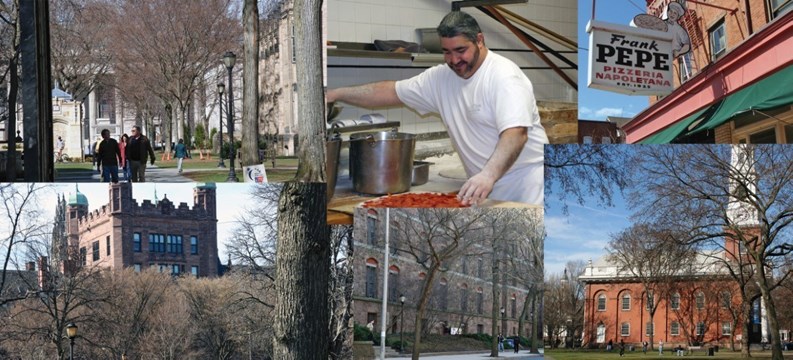Like any urban area, New Haven, Connecticut, has its share of challenges. Unlike some, however, this city tends to tackle its issues head-on, with an inspiring creativity and determination, as well as with success.
Twice in the past (both in 1998 and 2003), New Haven has won the All-America City Award, and it has just been named a finalist in that competition again. The National Civic League offers the award annually to recognize “communities for collaboration, inclusiveness, and successful innovation.” The League’s president, Gloria Rubio-Cortes, calls the award “the ‘Oscar’ for communities of all sizes,” and says it “exemplifies extensive civic engagement.” From all appearances, New Haven deserves to be in the running.
Noteworthy
Arguably, the city’s most valuable resources are its people. Mayor John DeStefano, Jr., seems to recognize this, and communicates regularly and openly with residents on the city’s website. His regular press releases keep all New Haven residents apprised of the city’s challenges and triumphs, and address such topics as road repairs, burglary arrests, youth vocational programs, teen pregnancy prevention, and, naturally, a celebratory note about the award nomination. Not only does Mayor DeStefano keep his initiatives public, but he invites communication from the public. His email address is available on the city website, and a program called “Web 311” has been set up so that people can address community concerns, complaints, and suggestions directly to the appropriate city office. Following the mayor’s lead, other city officials have made themselves accessible to all New Haven residents, even giving out contact information so that they can be reached out of the office.
When competing for the All-America City title this June, New Haven will highlight some of its most creative communityinitiatives in order to win it again. One such initiative is the Elm City Resident Card Program, which provides identity cards for all New Haven residents, irrespective of age or immigration status. This card, a tremendous asset in such a demographically varied community, facilitates public safety and opens up access to municipal areas and services.
Community accessibility is a priority for New Haven in other ways, too, and has garnered other positive attention for the city. In late 2007, New Haven was namedas a finalist for the Accessible America Awards. The city’s Disability Services Department is active in making the city widely accessible to all its residents, and provides on-line resource books and housing links for people with disabilities.
The city is also readily accessible to other communities. Located on a coastal harbor, and touched by three rivers, it has been a prime location ever since its establishment in 1638. The deep-water harbor is still an active recipient of cargo shipments. Now the city can also be easily reached by train, roadway and even air. Interstate highways 95 and 91, and the Oak Street Connector serve the city, as well as the Post Road, the Wilbur Cross Parkway and routes 10, 17, 34, and 63. The Tweed-New Haven Airport is serviced by US Airways. Amtrak offers train service between New Haven and New York, Hartford, Boston and Springfield, while the Metro-North Railroad provides commuters with a quick route into and out of New York City. The Shore Line East runs to New London, Connecticut, and a commuter rail line to Springfield is in theplanning stages. Meanwhile, discussion is underway to reinstitute streetcars as efficient and environmentally viable ways to get around the city itself. Many bike trails already exist for the same purpose.
Livable
Furthermore, housing challenges are being addressed from many angles. The Mayor’s Homelessness Advisory Committee has drawn up a ten-year implementation plan to end chronic homelessness. The Livable City Initiative, set up to “improve New Haven one neighborhood at a time,” incorporates the administrative, neighborhood, business, property and legal aspects of urban renewal. Gary Hogan, deputy of the Neighborhood Services Division can’t say enough good things about the all-encompassing successes of this initiative. From monitoring housing trendsto code enforcement to quality-of-life enforcement, the Livable City Initiative links people with people to strengthen their neighborhoods.
In addition, the Greater New Haven Realtors Association has a new “Regional Plan of Development” in the works. Sources there say that “density is the issue that continues into the next decade.” The association wants to shore up the infrastructure of the area to support the expanding community. “Planning for the future,” Association officials say, “will reinforce the central corridors, protect vital resources and keep the region a good place to live and work.” According to the realtors' group, there are currently 52,752 residential units in the city, with 25.3% of those being single units. The median sale price across the board for all dwellings is $218,250.
Although New Haven is comprised of several distinct neighborhoods, it characteristically crosses and blurs lines. The city’s own report on its downtown area notes, “Unlike any other neighborhood, Downtown serves a number of diverse, interrelated functions. The neighborhood is a core component to the regional economy, a thriving residential neighborhood, the home of signature public spaces and is the traditional home of the institutional/ government sector.” Much of the planning for the rest of the city revolves around the downtown. For example, College Square, a luxury high rise retail and residential complex, is scheduled to open in 2009. The city hopes to draw people downtown in order to improve the economy and thus provide more opportunities for residents across all demographic lines. In contrast to luxury living, but with a similar view in mind, the notorious Dixwell neighborhood recently underwent a renewal, with three hundred dwellings built or renovated. Yale University, undoubtedly the city’s most well-known resource, built its new police station in the refurbished neighborhoodto keep it on track.
Prolific
Yale University has contributed and continues to add to the city in many other ways. The Yale-New Haven Hospital offersexcellent care and also provides jobs for many New Haven residents. Hogan contends that the area’s status as a medical hub is growing, and that a technology hub is also emerging.
“I think,” Hogan adds, “[New Haven] has a wide variety of opportunities for kids, as well as for adults who like to eat out and enjoy the arts and other cultural aspects. Yale adds a lot.” With such well-known and well-reputed artistic institutions as the Yale Center for British Art, the Yale Repertory Theater and the Yale SymphonyOrchestra, he is not exaggerating.
But there are numerous other artistic avenues in the city. The city’s Office of Cultural Affairs states its mission is “to improve the quality of life in New Haven and to support the economic developmentof the City by assisting, promoting and encouraging artists, arts and cultural organizations and events in New Haven.” To that end, there is a large amount of public art in the city, owned by Yale, private collectors and the city itself, and it boasts an extensive list of museums and cultural events. The Shubert Theater and Long Wharf Theater merely top the selection of theaters and playhouses in New Haven. Meanwhile, whatever your musical tastes, from the performances of the New Haven Symphony Orchestra—the nation’s fourth oldest—to the New Haven Jazz Festival to the club scene at the widely-renowned Toad’s Place, you can hit the right note.
The historical John Slade Ely House was converted into New Haven’s first arts center, and many other museums and galleries have followed. Another of Yale's contributions is the world-class Peabody Museum, which houses one of the foremost dinosaur collections in the country. Its exhibits number more than 12,000,000 specimens, that have been assembled over the past 200 years. Because New Haven was not torched by the British during the American Revolution as many other nearby Connecticut towns were, much of the historic architecture remains standing. Forward-thinking New Haven residents in the past instituted UMA, the Urban Museum of Architecture, which designates some of these historic buildings as outdoor exhibits, making self-guided walking tours an appealing and viable option. Because of the rich diversity in New Haven’s population, ethnic restaurants, including selections of everything from Cuban to Eritrean to Turkish, also add to the city’s cultural wealth. And just
New Haven also has resources for the more athletically inclined. With four other universities as well as Yale, there is a breadth of collegiate sporting events to attend. New Haven is also home to the Pilot Pen Tennis Tournament, and to the New Haven County Cutters baseball team.
Resources for families abound. Traditional public schools, as well as approximately twenty magnet schools, dot the city. During Mayor DeStefano’s seven terms, schools have become laudably integrated across racial and cultural lines, and even draw students from the surrounding suburbs. Regular community events are held annually, such as First Night, New Haven Fourth, the Halloween Parade, and the New Haven Tree Lighting celebration.
Far from being either a rigidly stylized community or a hopeless urban sprawl, New Haven persists in rising to its challenges. The city’s Community Services Department has set goals “to improve the health and quality of life for all New Haven residents” and to reduce disparities between demographic entities. From luxury condominium developments to the Livable City Initiative, New Haven’s leaders, residents and business-people are working to bring hope to a city which defies traditional confines. Residents are invested in their community. Hogan sums it up for all of them when he says, “Right now, I’m just working to make New Haven a better place to live, work and grow old.”
Jennifer Grosser is a children’s book author and freelance writer living in Charlton, Massachusetts.






Leave a Comment